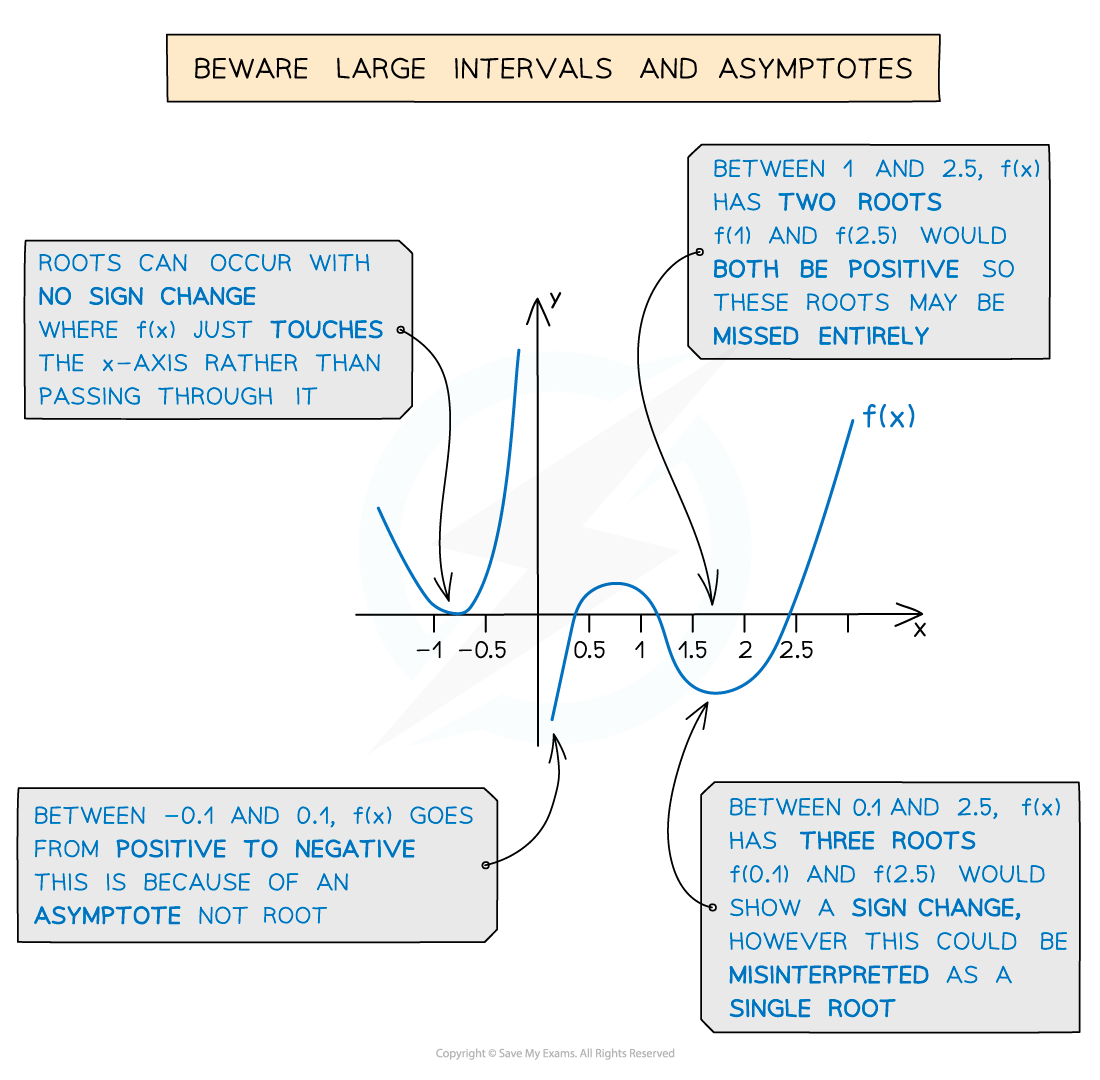Roots in Intervals (Edexcel International A Level Further Maths)
Revision Note

Author
Mark CurtisExpertise
Maths
Roots in Intervals
What is a root of an equation?
A root of the equation
is a solution
If
is a root of
then
The Greek letter alpha is often used
To find
exactly, you need to solve the equation algebraically (analytically)
Some equations cannot be solved algebraically
In which case you can approximate a root to a given accuracy
For example, to 3 decimal places
This is called solving equations numerically
What is an interval?
If you don't know the root but know that it lies between
and
, where
, then
is an interval containing the root
Intervals can be written using bracket notation
is
is
How do I show that an interval contains a root?
Use the sign-change and continuity test to show that the interval
contains a root to the equation
Show that
and
have different signs and check that
is continuous across
Then the interval
must contains a root
Continuous means no jumps or asymptotes in the interval
Check the equation does not divide by zero within the interval
(Jumps or asymptotes outside of the interval are fine)
You must write a conclusion to the test in words, for example:
"
has a sign change in the interval
and
is continuous in the interval, so a root must lie in the interval
"
Exam Tip
When writing your conclusion in the exam, don't forget to mention being continuous in the interval!
How do I show that an equation has a root to a given accuracy?
If asked to show that
is the root of an equation to 2 decimal places
write an interval using the lower and upper bound of the root
use the sign-change and continuity test on this interval

A suitable conclusion would be
has a sign change in the interval
and
is continuous in the interval
so a root must lie in the interval
All values in the interval round to
so the root is
to 2 decimal places
How do I know when the sign-change test fails?
You need to know the three cases when the sign-change and continuity test fails to work properly:
If the curve
only touches the
-axis at the root, you will not see a sign change (even though there is a root)
If the curve
has an asymptote in the interval, then you may see a sign change (but there is no root)
The asymptote means
is not continuous
If the interval is too large, there may be more than one root in it
You may see a sign change (an odd number of roots)
Or you may not see a sign change (an even number of roots)

Worked Example
The equation where
has exactly one positive root.
(a) Show that the intervals and
both have a change of sign in
.
Substitute ,
and
into
Comment that the signs are different for each interval
and
so there is a sign change in
and
so there is a sign change in
(b) Determine, with a reason, which of the intervals contains the root.
An interval contains a root if has a sign change and is continuous in that interval
Check to see if is continuous in
You need to look for any asymptotes
is undefined when
The asymptote lies in the interval
There are no other asymptotes and only one root
The interval contains the root as there is a sign change and
is continuous
The interval contains the asymptote
so
is not continuous

You've read 0 of your 0 free revision notes
Get unlimited access
to absolutely everything:
- Downloadable PDFs
- Unlimited Revision Notes
- Topic Questions
- Past Papers
- Model Answers
- Videos (Maths and Science)
Did this page help you?